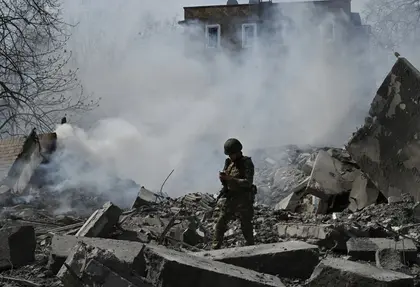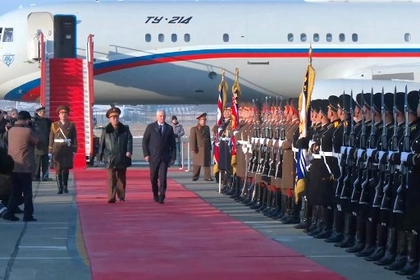On Ukraine’s side both the optimists and pessimists point to Avdiivka to back their ideas and positions. Here are five key takeaways you should learn about Avdiivka to get a more balanced, realistic picture of Ukrainian strategy and tactics.
1. The Russians really are gaining ground and the pace really is accelerating.
JOIN US ON TELEGRAM
Follow our coverage of the war on the @Kyivpost_official.
The Russian army captured the city of Avdiivka in February after nearly six months of attacking, taking fortifications the Ukrainians had held since 2014. Since then, the Kremlin’s forces have pushed northwest about 10 kilometers (6 miles) – about 2 kilometers in the past ten days.
The bulge in Ukrainian lines is about a kilometer wide at the tip and five or six at the base, so it’s not a breakthrough. But, at the same time, this pace of advance – roughly a kilometer a week or a few hundred meters a day – is the fastest pace of Russian advance since the early months of the war.
The Russian tactics are exploiting Ukrainian manpower shortages and particularly near-total Russian dominance of the air. The Russian Air Force is dropping glide bombs in quantity, which are not too accurate but are often able to saturate a wood line or village the Ukrainians are trying to hold. Ukraine is starved for long-range air defense systems and has almost no air force, so the Russian bombers drop the glide bombs with impunity.
Next, the Russians shell a Ukrainian position, and their shell supplies typically outnumber the Ukrainians’ five to one. Then the Russians send troops aboard armored vehicles to assault the Ukrainian positions. The Russians often take heavy losses, but if the attacks are kept up the Ukrainians have run out – of ammunition, unwounded soldiers, or even just fighting positions not wrecked by artillery or bombs.

Luxury Western Goods Line Russian Stores, Three Years Into Sanctions
Local Russian commanders act intelligently, have searched for Ukrainian weak points and take advantage of them when they can. To the west of Avdiivka, a muddled Ukrainian troop rotation was hit with a Russian assault, breaking up elements of Ukraine’s 115th Brigade and netting the Kremlin more than a kilometer of ground overnight. Isolated Ukrainian strongpoints are outflanked and hit simultaneously from several sides. Initial loads of attacking troops are often less well-trained reservists, while skilled regular army troops carry out follow-up assaults.
Once the Ukrainians retreat the Russians take aim at another wood line or defensive position 200-500 meters away, and the process repeats itself. From the Ukrainian point of view the most worrying aspect of the Russian attacks is that the Ukrainian military clearly has ways to slow them down, but so far has not shown itself able to stop them completely.

2. Partly, the Russians are advancing faster because the Ukrainians changed strategy and tactics.
In February President Zelensky replaced General Valery Zaluzhny – a hugely-popular officer with both troops and civilians – with Oleksandr Syrsky, a less well-known and older, but also professionally respected officer.
Zaluzhny was most famous for pulling the Ukrainian military together in the early days of Russia’s full-scale invasion, enforcing iron-rigid chain-of-command discipline, and for demanding frontline troops employ hard-core, die-in-place defense tactics that eventually stalled the Russian attacks. He attempted an ambitious counteroffensive in June 2023 that failed against strong Russian defenses, and when Ukrainian lack of progress was clear he took responsibility for the failure, called off the attacks, but often ordered troops to fight to the death to hold even marginal ground gains.
Syrsky’s battlefield tactics, and the junior commanders he has chosen to execute them, have shifted Ukrainian priorities from holding ground to preserving Ukrainian troops and inflicting as many casualties on Russian forces as possible. Drones – instead of artillery or tanks – have become the main strike weapon of the Ukrainian Ground Forces. In defense, the Ukrainian infantry mostly lays low as FPV and bomber drones, sometimes operating in swarms, seek out approaching Russian combat vehicles and even individual soldiers. Artillery and mortar ammunition is saved for quick barrage when the Russians are caught out in the open, hopefully when they hit a minefield. Since mines (like almost everything else) are short in the Ukrainian army, drone operators sometimes wait to see where a Russian attack column is driving, and then dump mines in their path.
Ukrainian soldier losses are kept relatively low by allowing local commanders to pull troops out of a position before the Russians swamp it, or, if the bombs and shells are coming in too thickly, before the defensive line is plowed up and troops no longer are able to shelter there. Also, the Syrsky-led army places a minimum number of soldiers in forward position, so that overall losses are reduced but, at the same time, accepting that if Russian infantry reaches a Ukrainian position the few defenders might get overwhelmed.
3. General Syrsky’s strategy and tactics arguably are working, and the Russians are taking brutal losses.
By almost any objective measure – and there are more than a few – the Ukrainian delaying tactics are inflicting vicious casualties on Russian forces. Open-source statisticians reviewing confirmed kill evidence – for the most part battlefield video – estimate that for every Ukrainian tank or armored personnel carrier lost on the battlefield the Russian military loses between three or four combat vehicles. Troop losses are harder to compute, but the Ukrainian military has reported that its internal count of Russian soldiers killed or severely wounded on the battlefield are at an all-time high.
Anecdotal evidence of how that is playing out for the average soldier is limited but seems to confirm that Russian soldiers see themselves as being thrown into repeated, bloody attacks against 24/7 drone swarms. Ukrainian soldiers see themselves as up against massive assaults where, sometimes, there is no option but to retreat from.
Repeatedly, Russian armored attacks have been cut to pieces by Ukrainian drone defenses, but, in a local battle lasting days or even weeks the Ukrainians in the Avdiivka sector have not been able to stop the Russian infantry assaults completely. This means Syrsky’s tactics, though excellent for destroying Russian troops and equipment, have been unable to halt Russian ground advances in sectors where the Kremlin particularly wants “success,” like Avdiivka.
4. Remember All those weapons Congress Just “Gave” Ukraine? Definitely not in Avdiivka.
After four months of delay, the US Congress approved a new $61 billion arms assistance package to Ukraine, and on April 24, the same day that he signed the aid package, US President Joe Biden also signed off on an emergency delivery of $1 billion of critically needed weapons and ammunition.
Russian troops, a week later, on April 30, in fighting west of Avdiivka took over about six square kilometers of Ukraine’s territory.
Promised American assistance in the April 24 emergency assistance package, that are specifically designed to destroy ground attacks like the ones Russia is making around Avdiivka, included: 155mm artillery rounds (including High Explosive and Dual Purpose Improved Conventional Munitions rounds); 105mm artillery rounds; 60mm mortar rounds; Bradley Infantry Fighting Vehicles; Tube-Launched, Optically-Tracked, Wire-Guided (TOW) missiles; Javelin and AT-4 anti-armor systems; Precision aerial munitions; Anti-armor mines and Claymore anti-personnel munitions.
Aside from scattered artillery strikes potentially caused by US-made 105mm or 155mm shells, Kyiv Post reviews of battlefield accounts and video geo-located to Avdiivka found no evidence that any of that American assistance had reached the Avdiivka battlefield.
5. The key things to watch are Russian troop losses and Ukrainian artillery shell supplies. Syrsky’s doctrine depends on plenty of firepower.
Ukraine’s European allies likewise have promised Kyiv a great deal of battlefield assistance but been slow to deliver, but in the Europeans’ case the problem appears to have been less Washington-style political wrangling and ineffectiveness, and more logistics and production capacity.
By far, the Western battlefield assistance Ukrainian soldiers ask for the most is artillery ammunition which, were it available in quantity in Avdiivka, would be pounding Russian attack columns the moment they drove out into the open and not stopping until survivors retreated or were crushed.
A Czech-led initiative kicked off in March to give Ukrainian artillery gunners the shells to do that job found plenty of political backing and funding across the continent, and according to news reports once the shells get manufactured and delivered the Ukrainian army shell reserve will receive a million-round backfill. That would probably be more than enough to allow a Ukrainian howitzer more than a couple of or half-a-dozen shells a day, to shoot at the Russians.
The problem is that the shells need to be manufactured in places that don’t normally supply NATO with artillery shells – India, Turkey, South Africa and South Korea have been mentioned most often – and then shipped to Europe, and then shipped to Ukraine, and then delivered to Ukrainian army depots, and then trucked to Ukrainian artillery batteries. The Russian army will be safe from those shells because they won’t be in Ukraine yet, at least until early June, analysts generally agree.
The US military funding bill has hundreds of millions of dollars of seed money baked into it to raise US shell manufacturing capacity eight-fold. The two stumbling blocks there are that a full gearing up will take about three years, and that, since it is government funded, the next Congress or President could decide more shell production capacity in the US is a bad idea.
The Ukrainian strategy under the circumstances has been to try to increase production capacity of its own (not so easy when the Russians are using bombs and missiles to destroy it) and to figure out ways to make do with cheap substitutes to artillery shells, almost always drones, and just inflict the most casualties on the next Russian attack.
Optimists point to Russian assaults around Kyiv and Mykolaiv in 2022, and the Serebryansky Forest and Avdiivka in 2023 as evidence that if the terrain and ammunition allow it, the Ukrainian military is fully capable of making Russian attacks so bloody the Kremlin calls them off. No army can take casualties forever, they argue.
Pessimists also point to Avdiivka, and the fact after six months of failed assaults and heavy losses Russian troops finally prevailed, even though Ukraine told Western allies for more than two years that it needed enough firepower to prevent something like that.

You can also highlight the text and press Ctrl + Enter








